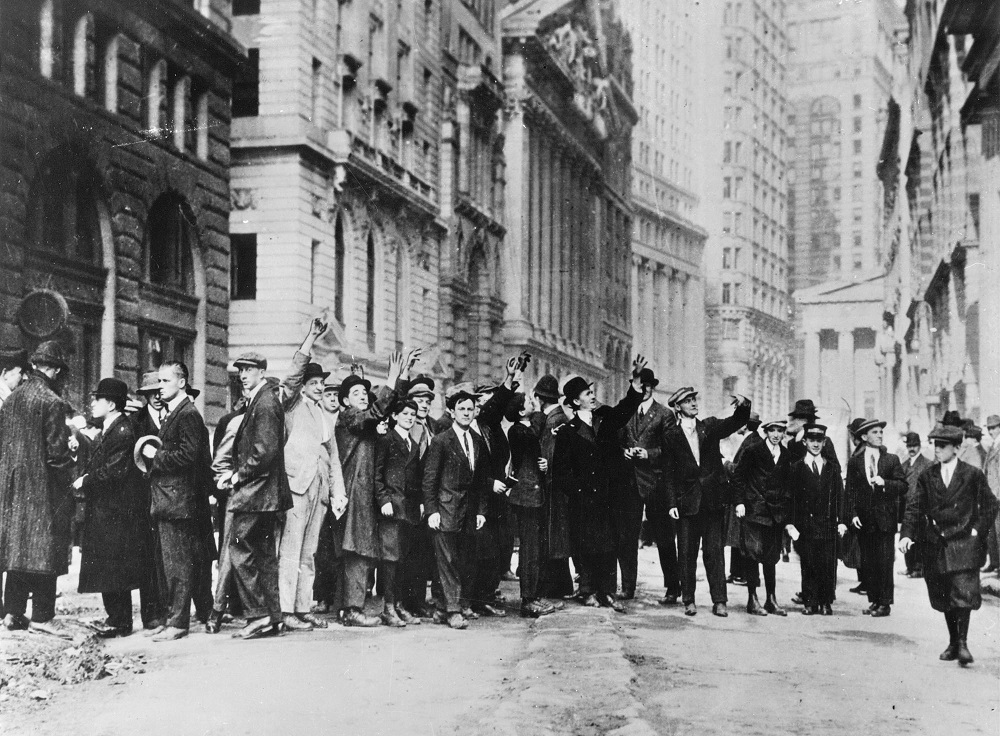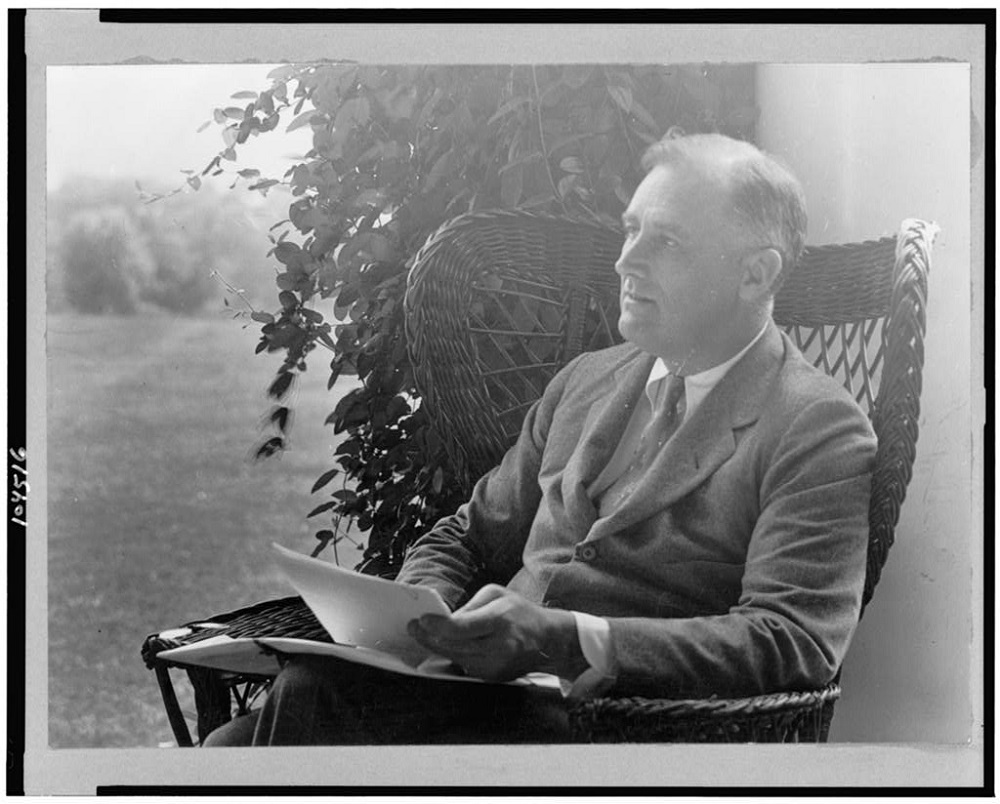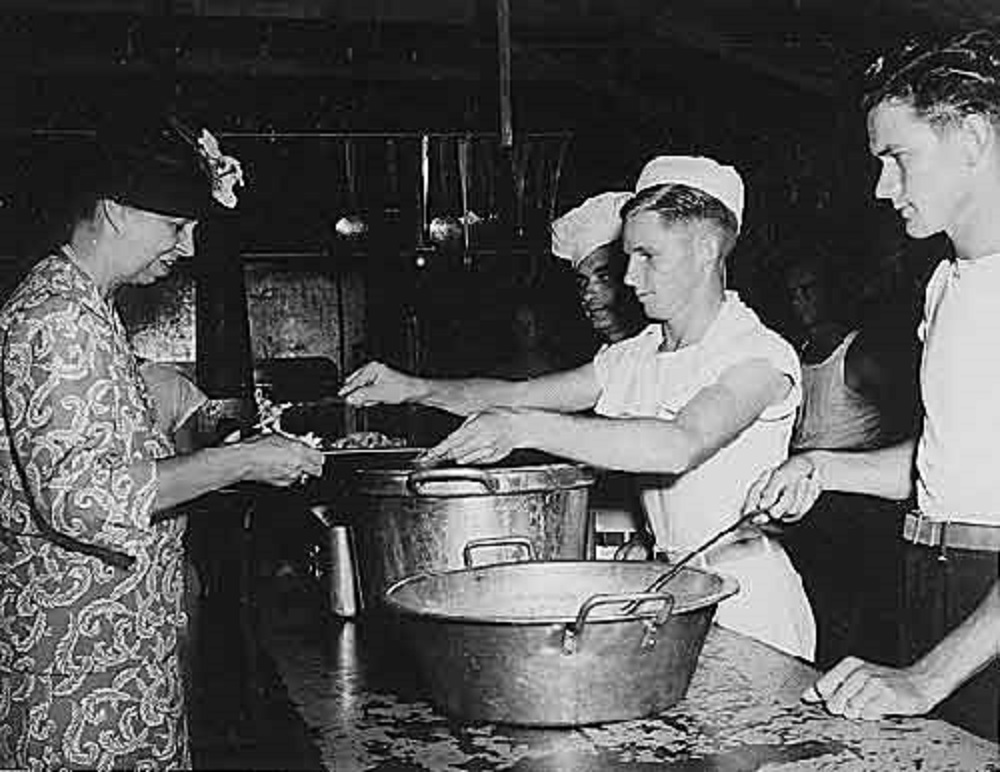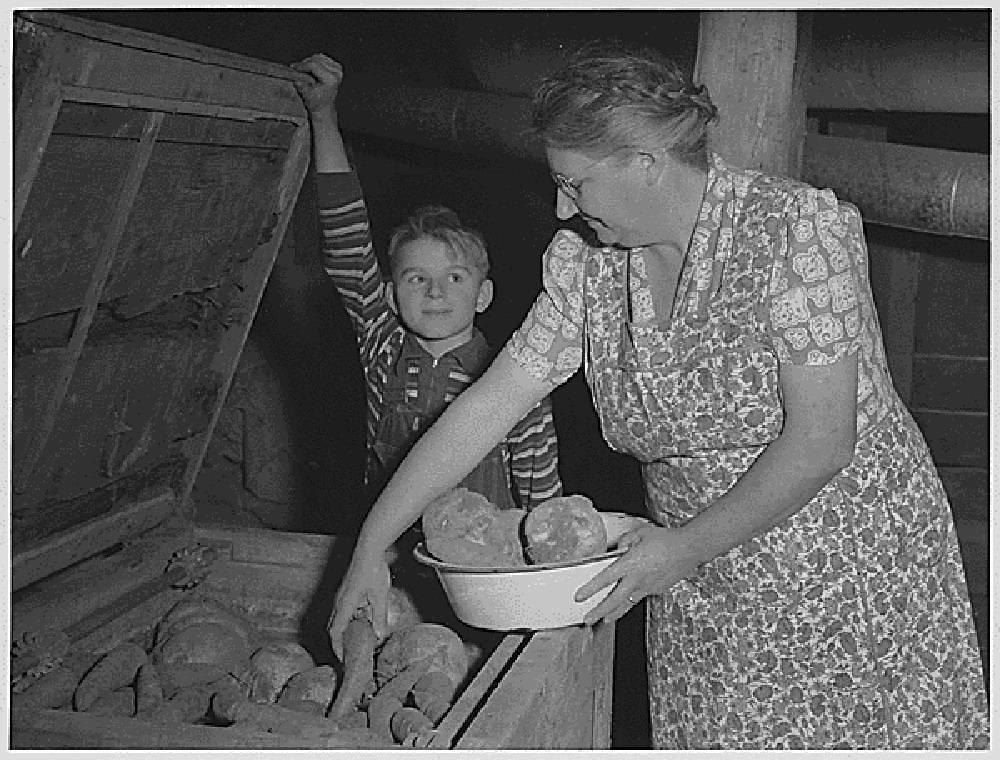The Great Depression wasn’t just an economic crisis; it was a national trauma.
Hello again, and thank you very much for checking out another article from my blog, History in the USA. For today’s topic, I have chosen another tragic event that lasted no less than 10 years, the Great Depression.
Due to its early industrialization, the United States was in a particularly advantageous position. It had produced a wide range of goods, had a strong workforce, and had escaped major wars. Many Americans started making significant stock market investments since they had plenty of money and few worries. Sounds like a good time to be alive, right? Until it wasn’t anymore. When the stock market crashed in 1929, it impacted many people desperately trying to sell their stocks without any luck.
Although the stock market crash was only the first step toward the economic collapse, the Great Depression had many causes. As economists say, America had seen recessions before, but none of them were like this one.
If you’re curious about the details, or you want to find out more about what you already know, or you’re simply passionate about history like I am, make yourself comfortable because we have a lot to talk about.

The stock market crash: the first bubble to burst
Widely known as “Black Tuesday,” the day of October 29, 1929, when the stock market crashed, is remembered as the day that began the worst era for Americans. But few know that the market started its decline in early September.
The company’s stock fell 40% in a single month. Suddenly, millions of Americans were deep in debt, many of whom had borrowed money to invest. These loans’ inability to be repaid started a domino effect that affected the entire economy.
People started panicking, businesses lost money, consumer spending slowed, and unemployment skyrocketed. According to statistics, stockholders had lost over $40 billion. If now it sounds like it’s a huge amount, imagine how it was for that time and in that economy. As mentioned at the beginning of my article, the Great Depression wasn’t just an economic crisis; it was a national trauma from which people hardly recovered.
By the end of 1930, the American economy was in ruins, despite the stock market recovering some of its losses. The most depressing era officially began in the United States.
The unemployment rate was extremely high
Due to decreased demand, businesses started reducing expenses by laying off employees, reducing production, and, in many cases, filing for bankruptcy. The unemployment rate in the United States peaked at an extraordinary 25%. Families had to adjust to a harsh new reality after losing their homes and going hungry.
Individuals fortunate enough to keep their jobs intact tended to conserve their financial resources, which inadvertently contributed to the intensification of the crisis by reducing overall demand.
More than 9,000 banks had failed
Banks started to go out of business because they couldn’t get their money back. Depositors lost all their money overnight because there was no federal insurance. In the last months of 1929, almost 700 banks went out of business, and in 1930, more than 3,000 banks went out of business. There is no doubt that this was one of the main causes of the Great Depression.
Citizens lost all their money in times when nobody was hiring them, so what’s left to do? Of course, panic was the first thing to do, and I can’t blame them; after all, losing your life savings isn’t easy.
Fearing you will end up on the street because of the unavailability of paying your monthly bills, debts, and so on. What if you also had a family that you were supposed to take care of?
Knowing that more than 9,000 banks had failed, people panicked, causing bank runs while trying to withdraw their money. Because of this, even more banks had to shut down their activity. These actions made things worse, so people spent less and less.
Overproduction of businesses despite the economic crisis
During the Great Depression, ironically, even though demand went down, businesses kept making things at the same rate as before the crash to meet fixed costs and investor needs. This made too many goods available, which caused prices to drop.
For instance, the price of cotton went down by two-thirds. The deflation spiral caused people to delay purchasing items. They postponed buying expensive goods, hoping to find better deals later. This resulted in even fewer sales and further damage to the economy.
The Great Depression was not limited to the US
Millions of people gradually fell into poverty, and this episode was just the beginning of more terrible things to come. It began in America, where both men and women lived in impoverished communities and had to wait in line to buy bread. It then gradually extended beyond the USA borders and turned into one of the most damaging periods of our history.
In Germany, for example, the devastation caused by economic struggles gave rise to the Third Reich, which led to the start of WWII. People became desperate, believing the Führer’s promises to improve their lives, but those promises were never fulfilled.
America’s economic relationships with Europe
The Great Depression increasingly affected the country, prompting authorities to act. And what did they do? The Smoot-Hawley Tariff, also known as the Tariff Act of 1930, was passed by Congress with the promise of shielding American industry from foreign rivals. A large number of imported goods were charged near-record tax rates as a result of the measure.
Several U.S. trading partners responded by introducing tariffs on goods manufactured in the United States. Consequently, between 1929 and 1934, global trade decreased by two-thirds. By that time, the president was able to negotiate much lower tariff rates with other countries thanks to new legislation passed by Franklin Roosevelt and a Democratic-controlled Congress.
When the Smoot-Hawley Tariff Act is discussed in the modern world, many people claim that it was one of the disastrous policy mistakes that increased global depression, even though the original intentions were good, or at least intended to be good, and help the nation’s economy as much as possible.
The U.S. abandoned the gold standard
The U.S. got rid of the gold standard to fight shortages and get people to spend more money. This let the government print more money, stop prices from falling, and put money into the economy.
The Roosevelt administration used this new money flexibility to pay for big public works projects like schools, parks, and roads, and it also created jobs for millions of Americans who desperately needed them.

President Franklin D. Roosevelt and the New Deal
You will notice that on my blog, I frequently state my opinion regarding certain situations, political figures, or historical events. Many people who know me and my passion for history asked me my opinion regarding the former President Franklin D. Roosevelt, and I will say this: although some of his ideas are questionable, I believe Franklin D. Roosevelt was a good president for the nation.
The nation was desperate to survive despite the economic horrors, and he did his best, given the circumstances, to help America see the light again. This is why he ranks among the top three best presidents in American history.
Agriculture Adjustment Act
As mentioned in my previous paragraphs, between 1930 and 1933, due to the Smoot-Hawley Tariff and the ensuing trade dispute, US agricultural products were unable to access export markets, which led to a domestic surplus. In 1929, a bushel of wheat cost $1, and in 1932, it cost nearly 30 cents.
The US government deliberately destroyed crops because there was so much farming going on. As part of the Agriculture Adjustment Act, the US government bought vast tracts of productive crops to plow under and slaughtered millions of healthy cattle. This was done in an attempt to lower supply and more effectively align it with the falsely decreased demand, which led to price increases.
You may be surprised to know, but this program is still in place today, as evidenced by the Conservation Reserve Policy, which in certain places still pays people not to grow crops.
The “Dust Bowl”
I bet that you’re already familiar with the term “dust bowl,” which describes a dark period of American history. Robert Geiger, an AP reporter, first used the term “Dust Bowl” in 1935 to characterize the drought-stricken south-central United States following terrible dust storms.
Huge dust storms suffocated towns, killing livestock and crops, making people ill, and causing damage worth millions of dollars. The Dust Bowl symbolizes the struggles faced by the entire country during the 1930s, and environmental ruin was another major cause of the Great Depression.
Some citizens managed to “escape” and flee from the country to escape this horrible economic collapse. Some said that those who did that weren’t patriots and didn’t care about the country, but I say that when someone is pressured enough, they will eventually break and stop looking at the big picture and focus more on themselves and their families.
For my comprehensive article about the Great Depression, I used many books, documentaries, and historical manuscripts that I found at the National Library. But out of all books, there are two that stick with me, both written by the same outstanding author, T. H. Watkins.
The first one is The Hungry Years: A Narrative History of the Great Depression in America, which is an emotional lecture written based on the stories of the people who lived it. Expect a meticulously detailed lecture that follows the disaster’s phases in chronological order while retaining an awareness of the psychological damage it caused and the actions taken by individuals. Aside from crying a little! Or at least, I did.
The second one is The Great Depression: America in the 1930s, another book that gave me both informational facts that I used to write this article, but also goosebumps. Indeed, it’s not that emotional since it’s not written based on people’s life stories, but if you’re passionate about history, I’d say it’s a must in your collection. I bought it from a thrift book shop, but I think it may be available on Amazon, too.
Men weren’t the “primary breadwinners” anymore…
As mentioned multiple times before, by 1933, one in four Americans was unemployed, and most of them were men. Men’s roles as providers made job loss during the Great Depression deeply affect their self-worth and sense of manhood.
Despite their desire to work, men frequently refused to accept jobs they viewed as “women’s work,” considering them to be beneath them. Women and their domestic responsibilities consequently became more significant and well-known within the family.
Men who find themselves unexpectedly unable to provide for their families are particularly affected psychologically by financial strain. The nation’s suicide rate hit a record high in 1933. Marriages began to suffer, even though many couples could not afford a divorce.
…on the other hand, many women worked in ringer houses
Women were able to work on their own or as “ringers” in households in the 1930s. Those who wanted to work as ringers had to go through disease testing and obtain a certificate of health, which both customers and madams would want to see. A ringer’s daily clientele could range from 10 to 15. The women would be registered at a main house, and ring houses were typically a part of a chain of houses.
Food during the Great Depression
Being frugal is also a thing for 2025, as it was for the Great Depression era. Radio shows and newspapers taught people how to be more savvy, stretching their budget as much as possible by cooking meals for one week in larger pots and casseroles. And the awesome part was that not only did the citizens follow these rules, but also the presidential family did.
Since you couldn’t eat delicacies, you had to improvise; that’s why you frequently had to settle for whatever ingredients were available. Of course, quantity was more important than taste. Because they had to make everything from scratch during this dark American era, people became more creative with food.
I was surprised to learn that the apple pie contained no apples, as they were in short supply, and even if you were fortunate enough to find some, they were also very expensive. As a result, one of the most popular foods in the Great Depression was the mock apple pie made with soda crackers or Ritz crackers.

Prune pudding- a delicacy at the White House
Eleanor Roosevelt, the first lady, did not allow the Great Depression to continue to depress her nation; that’s why, during the Great Depression, the White House served some of the dreariest food ever.
With “prune whip” (pudding) for dessert, the presidential family also used to have “deviled eggs served in a tomato sauce with a side of mashed potatoes.” Since fresh fruit was expensive, dried fruits were the best and cheaper alternative used in most households during the Great Depression.
Recovery and how the Great Depression ended
There is no doubt that the Great Depression changed America in so many ways, and it’s still vivid in our memories. The development of the first extensive welfare programs in America was one of the Great Depression’s longest-lasting effects.
The Social Security Act of 1935 brought about unemployment insurance, pensions for the elderly, and assistance for dependent children and the disabled. These safety nets, revolutionary at the time, saved millions of Americans from the complete collapse of household income.
For the first time, citizens could ask for the help of the authorities and actually receive it. On the other hand, both historians and economists argue that the New Deal didn’t actually stop the Great Depression; it’s likely that the end of WWII did it.
Following the war, Truman reduced taxes, cut government spending from 42% of GDP to 14%, and reversed many of FDR’s policies. This would be just the beginning of a great era for America in terms of economic prosperity. Sooner, the US will become a significant industrial hub for the world.
…hey! I know the article isn’t exactly similar in topic to the Great Depression, but I would appreciate it if you check it out too! Area 51: 5 Shocking Facts You Didn’t Know.
